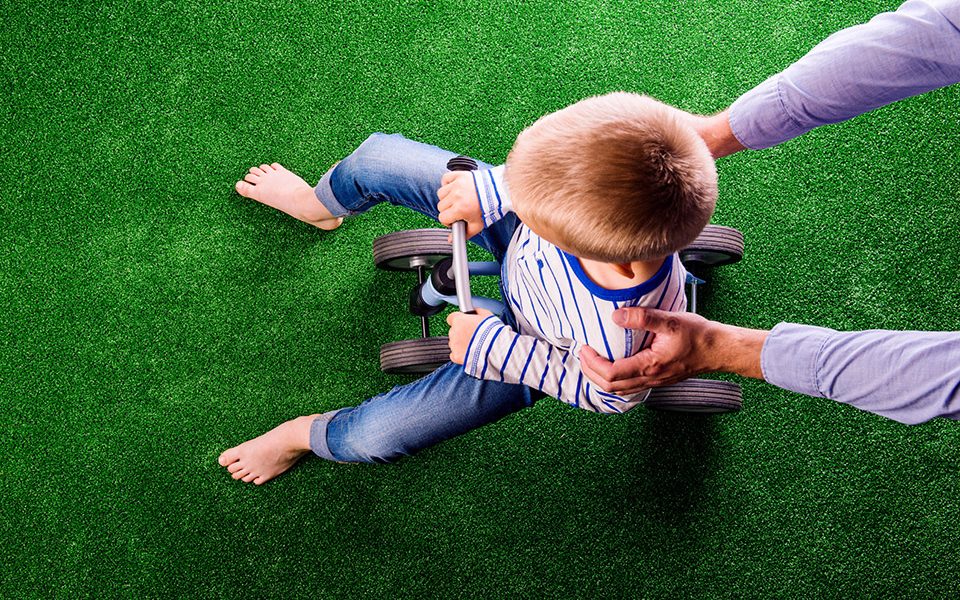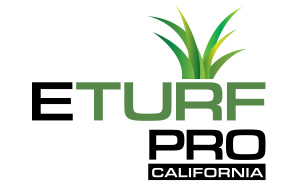How Well Does Artificial Turf Hold Up To Heavy Traffic?
When choosing synthetic turf for your lawn, you will want to settle for a durable one that can serve you for a prolonged period without significant deterioration in value or quality. As a result, it is important to consider the amount of foot traffic you anticipate on your property.
For some people, artificial turf is for aesthetic purposes and hardly stepped on, while it sees a lot of foot traffic daily for others. While low-traffic turf is ideal for less substantial activities, high-traffic synthetic turf can stand up to just about anything, from kids and dogs to playground and sports activities.
Common Areas Where Artificial Turf Receives Heavy Traffic
Synthetic turf is often used in various institutional, residential, and commercial applications like the ones listed below.
- Outdoor entertaining areas
- Sports fields at stadiums, parks, and schools
- Walkways
- Underplay structures, backyards, and playgrounds
- Dog runs
- Pool decks
These areas receive heavy traffic and require turf that can endure this usage. For this reason, fake grass continues to grow in popularity since more people appreciate its ability to uphold visual appeal and durability many years after heavy use.
For instance, when homeowners use natural grass as walkways, it will die in areas that receive the most traffic. And when used in backyards where dogs live, the grass will die or get brown spots in areas used frequently.
In play areas or soccer fields, natural grass develops clumps, holes, and divots from heavy traffic. But synthetic turf will withstand heavy-use conditions and still look welcoming and lush with little maintenance.
How Long Does Artificial Turf Last with Heavy Traffic?
Usually, you can expect your artificial turf to last about 10 to 20 years. Homeowners with high-quality products should see their turf’s durability fall into the high end of the range, with others lasting even more than 20 years.
However, your turf’s durability will highly depend on several factors like the quality of installation, the turf, and whether you keep up with maintenance according to the traffic level it receives.
Does Artificial Turf Flatten Under Heavy Traffic?
Natural and artificial grass will flatten in areas where people walk, children play, or pets roll. In areas that experience heavy traffic, this effect will be long-lasting and more noticeable.
With natural grass, high-traffic areas develop bare spots, die back, or form noticeable paths where they have been constantly stepped on. But with synthetic turf, infills help to keep the blades upright and bounce back when trodden.
If flattening is a concern, there are several measures you can take to prevent this from happening or correct it when it does.
How to Prevent Your Artificial Grass from Flattening
Brush Regularly
Artificial grass flattens when fibers condense in one direction and do not stand upright. To fix this, cross-brush your turf every month or so. That means brushing your turf fibers in the opposite direction they are leaning to. Use a stiff broom with synthetic bristles to get them in their right position.
For a deeper clean, use a power broom, which will also help cut down on energy and time, especially if you have a huge lawn or commercial property.
Plus, it straightens the blades as you progress and picks up debris like pet hair, dust, and leaves. And given that an outlet powers it, you can cover a large area with minimal effort and within the shortest time possible, unlike a traditional broom.
Include Walkways
Create walkways for your guests and children if you anticipate more activities in certain areas, like between your patio and back door or between your deck and swimming pool.
This will help control traffic and prevent people from constantly stepping on your grass in the same spot. Paving stone walkways are an attractive, slip-resistant, and durable option that goes well with synthetic grass. However, you can also consider stamped concrete or brick.
Sweep The Grass
When your turf flattens on its own, you can restore it by sweeping it up. You can use a brush for this. While sweeping, do not only focus on restoring the grass but also clean to remove grime and dirt. This means swiping away hairs, leaves, or other items that can affect your turf’s lifespan.
Move Garden Furniture Regularly
Moving garden furniture on your lawn ensures that the artificial grass beneath does not stay flat for long. However, this should not be a problem if you have high-quality grass.
Also, it would be best to consider the type of furniture placed on your turf. It may penetrate your turf, damaging it permanently if it is metallic. But your grass should be fine if you place something soft like wood.
Avoid Parking
Synthetic grass can be driven on and parked on. However, this is not a good idea because oil and other substances will likely damage the grass.
When you constantly place a heavy object in a similar area and let it stay there for a longer time, you will also experience some flattening. That means if you often park on an artificial lawn, you can expect flattening in that particular area. The best solution is to avoid parking on your grass.
Get Rid of Weeds
While this is not directly related to the flattening of synthetic grass, you may find that plants growing around or near your turf will make the entire fixture seem flattered and messy in the middle.
To curb this, consider purchasing a weed killer and spreading it on the borders of your lawn to make it stay clean and neat.
Hire a Professional Groomer
If you are busy or do not want to bloom your turf blades, a professional synthetic turf groomer comes in handy. Artificial turf cleaning services will ensure a cleaner turf than you can achieve. They will re-fluff the turf fibers, remove debris, and de-compact infills to restore your lawn to its pristine condition.
Conclusion
When choosing artificial turf for your yard, foot traffic is a thoughtful factor that you cannot afford to ignore. If you are still on the fence about choosing a heavy-traffic turf, contact us, your local artificial turf experts, to speak to an installer. We will help you find the ideal artificial turf products and installation fixtures for your business or home.


